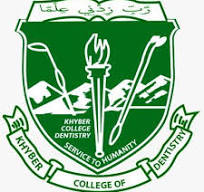SEVERITY OF LOWER ANTERIOR ARCH CROWDING AND ANGULATIONS OF IMPACTED THIRD MOLAR
DOI:
https://doi.org/10.33279/jkcd.v11i04.116Keywords:
Third molar angulation, impaction, mandibular arch, crowding, irregularity indexAbstract
Objective:
To find out the association of lower anterior arch crowding with the angulations of impacted mandibular third molar.
Materials and Methods:
Data for this cross-sectional study was collected from the Panoramic radiographs and dental casts of the patients meeting the inclusion criteria. The mandibular impacted third molars were classified based on Winter’s classification and lower anterior arch crowding was classified using the little’s irregularity index. A statistical analysis was performed using both descriptive and inferential statistics. Mean ± standard deviation was used for numerical data. Chi square test was used to observe any association between the variables.
Results:
A significant association was found between severity of lower anterior crowding and angulation of mandibular third molar impaction (p value 0.01). Out of total 83 cases, 40 (48.2%) were vertical impactions in which mild crowding of incisors was more prevalent (56.0%), also in 28 (33.7%) cases which were of mesioangular impaction type, also showed increased prevalence of mild crowding (40%).
Conclusion:There was a significant association of mandibular incisor crowding with angulations of impacted third molars.
Downloads
Published
How to Cite
Issue
Section
License
Copyright (c) 2021 Summiya Bashir, Aneela Nausheen, Umar Nasir, Bibi Maryam

This work is licensed under a Creative Commons Attribution-NonCommercial-NoDerivatives 4.0 International License.
You are free to:
- Share — copy and redistribute the material in any medium or format
- Adapt — remix, transform, and build upon the material
- The licensor cannot revoke these freedoms as long as you follow the license terms.
Under the following terms:
- Attribution — You must give appropriate credit , provide a link to the license, and indicate if changes were made . You may do so in any reasonable manner, but not in any way that suggests the licensor endorses you or your use.
- NonCommercial — You may not use the material for commercial purposes .
- No additional restrictions — You may not apply legal terms or technological measures that legally restrict others from doing anything the license permits.










